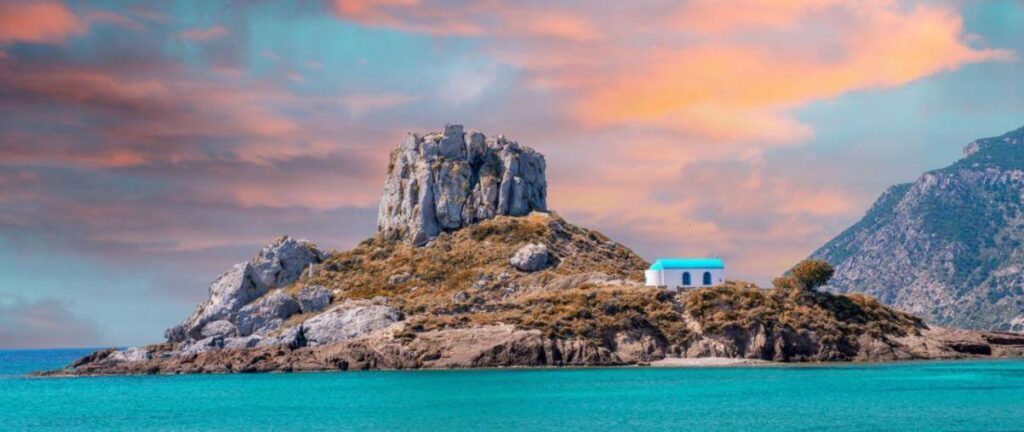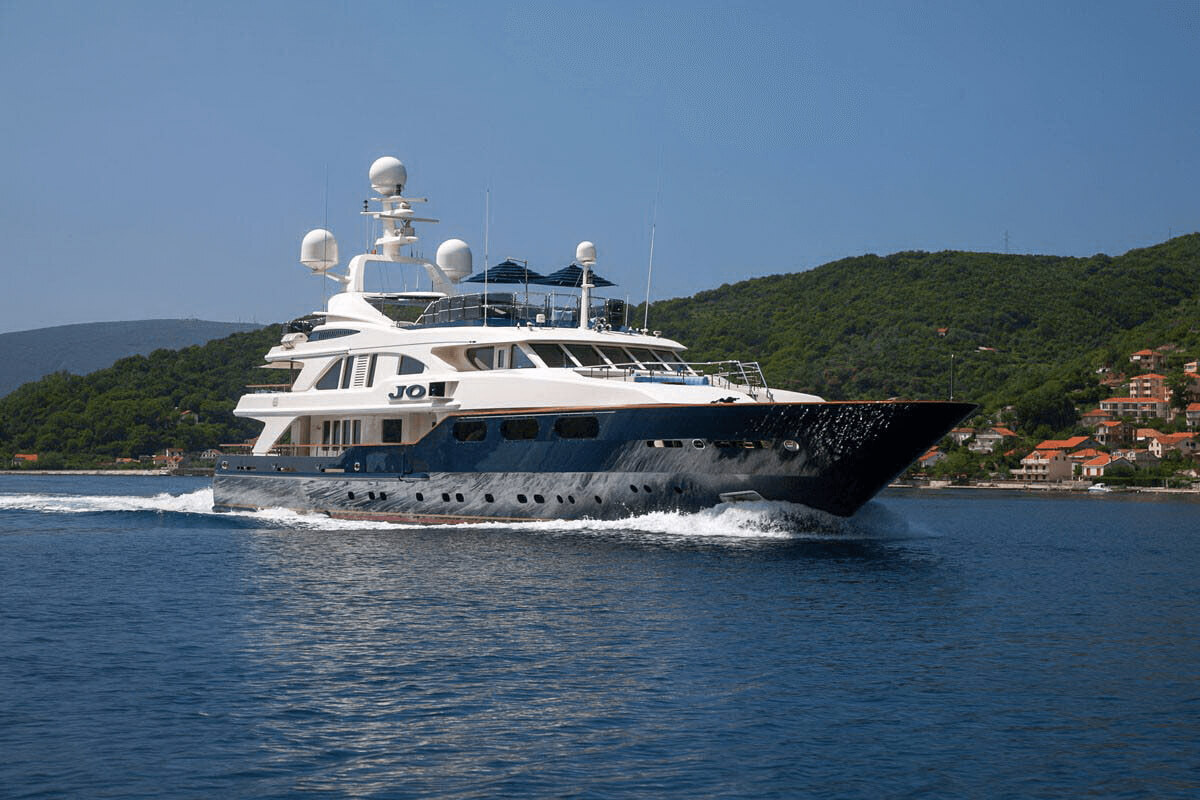Suggested itinerary for Greece
A. General Information
Greece looks like a big island of 51,000 square miles in the southern Balkan Peninsula of southeastern Europe. No need to mention that is laid in between Italy and Turkey. The population of Greece goes a little over 10 million, when Athens the capitol of Greece embraces around 3 million from total population. The history of the Drachma monetary is not subject for present since economy was influenced since January 1st, 2002 when according EU Greece granted the EURO. Our experience in yachting industry since Euro entered our financial routine is not the expected due to the big difference in exchange rates especially in between euro with US Dollar.
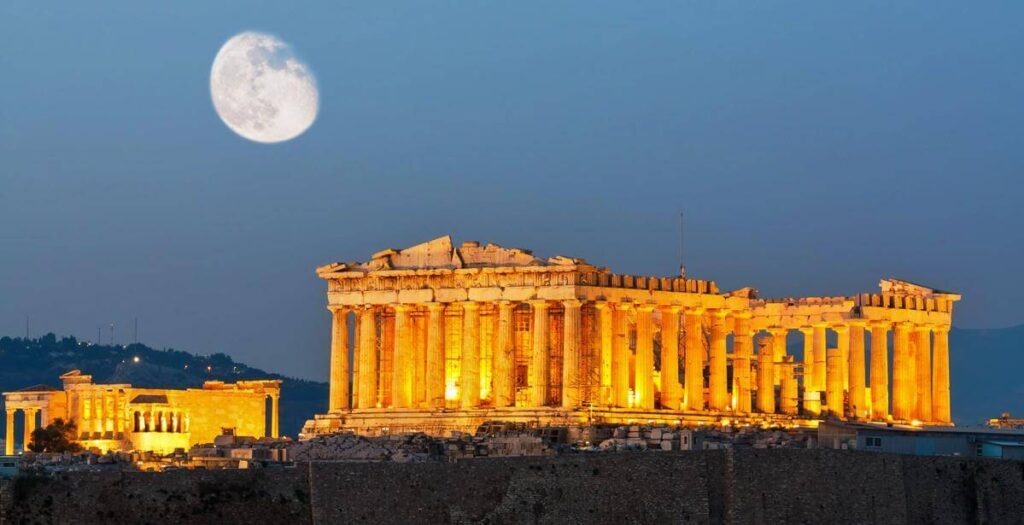
Let’s go back in time. Ancient Greece is considered the cradle of the human civilization, starting about 2500 years ago. In those days Greece controlled much of the land bordering the Mediterranean and Black Seas. In Athens and elsewhere in Greece, magnificent ruins stand as monuments to the nation’s glorious past. Arts, philosophy, and science became foundations of Western thought and culture. About a fifth of Greece consists of islands and no part of Greece is more than 85 miles from the sea. Greece and its sun-kissed isles offer a tantalizing cuisine that is fresh and fragrant, served with warmth and vitality. The Greeks’ zest for the good life and love of simple, well-seasoned foods is reflected at the table. There’s is an unpretentious cuisine that makes the most of their surroundings. It is a cuisine entrenched in history and punctuated by the cultures of neighbors for centuries: Turkey, the Middle East, and the Balkans.
Customs and culture
The country of Greece is a parliamentary republic, and an upstanding member of both NATO and the European Union. The predominant religion is Christian Orthodox and the national language is Greek, however, nearly all citizens speak English with relative ease. With a population of approximately 10 million, you will find that the charm of this enchanting country lies in its friendly and welcoming atmosphere, and its deep-rooted sense of family and religion. While Greece will forever be renowned for its age and antiquity, the city of Athens in recent years has become extremely urban and contemporary, and you may find yourself at home in a culture that has embraced the advances of recent decades.
The islands, on the other hand, maintain a much more relaxed state of mind. Here you will discover that everyday life revolves around the calming energy of the sea. The Greek islanders enjoy sleeping in, indulging in extravagant meals, and visiting into the late hours of the night. Year round attire is always casual, and shopkeepers subscribe to a mid-day ‘siesta’ when marketplaces completely shut down for a few hours every day for afternoon tea with family and friends. In our guests we suggest to join the locals in this customary tradition, and experience the real flavor of Greek Island culture.
Currency
The national currency of Greece is the EURO implemented into the Greek economy since January 2001. The exchange rates are unfortunately not similar with the US Dollar since last year.
Foreign exchanges are abundant in Greece both mainland and on the islands, and most banks stay open till late to accommodate the tourists.
You may tip 50cents the taxi or a euro in hotel. Charter gratuity that is not an obligatory item, is upon discretion, yet all most experts in the market suggest we may mention 5%-15% of the net charter fee.
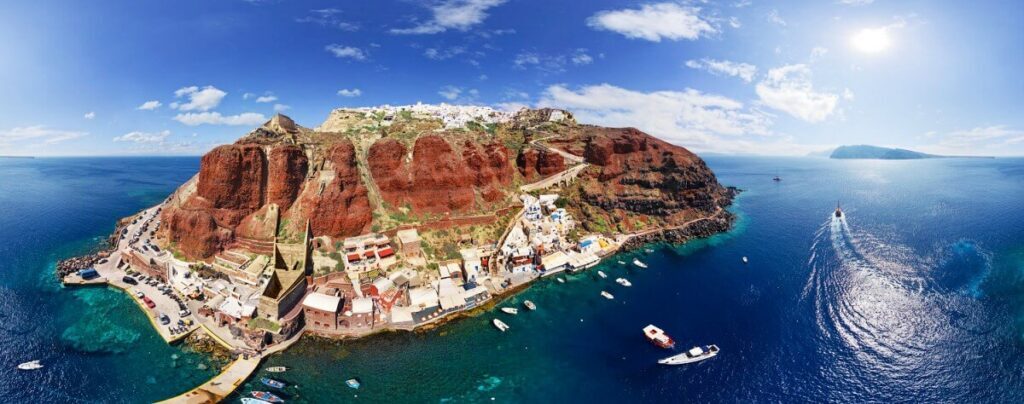
Security
Immediately upon arrival in Greece, we will strive to ensure guests that the safety and security accustomed to at home extend across the world to our friendly country. We alert as to the location and contact information of our guests Embassy should they required any assistance during stay (despite in our records was never needed and we believe Olympics 2004 have proven this). Emergency contact information will be provided by guests should we ever need to contact family members at home. Parents & family back Home should rest assured that we warmly welcome children aboard any all yachts (on the contrary of other countries and vessels where children are not allowed!) and that the crew will handle them with extra care. Nannies hired offer another suggested alternative if parents wish us to provide. The service and professionalism our guests experience in Athens will continue to during cruise to the islands. Incredible renovations across the city as Greece brought changes in the city prior the 2004 Olympic Games, a great success in Greek History. Impressive is the officers’ patrol in the streets, ensuring the safety of Greeks and visitors alike. While at sea, captain will maintain constant contact with our offices on land, and guests may rest assured that security is a top priority. An amazing detail that proves how safe Greece remains is the view of the unlocked doors in the Greek islands; Wide open and certainly unlocked during night! Our guests feel free to walk during any time day and night with not a danger of any kind of harassment or steal.
For the pure air and sea. You can sail away from polluted cities, crowded airports and hotel lobbies. You can be in comfort, with your own crew, your private sun and blue skies. For privacy, any island offers you remote beaches, secluded bays or almost barren rocks, all hospitable. However, like the Greek people, you can be on your own, sailing, swimming, skiing or just relaxing. For comfort, an experienced crew is eager to make you feel like royalty. For exclusivity, there are countless places in Greece, which remain unspoiled by tourism. These can be all yours! They are not all that far away, but access to them is impossible except by yacht! Drink your champagne into a cave where the sea takes colors from a wide palette, have your steward to offer your snacks in a secluded bay with white sandy beach!
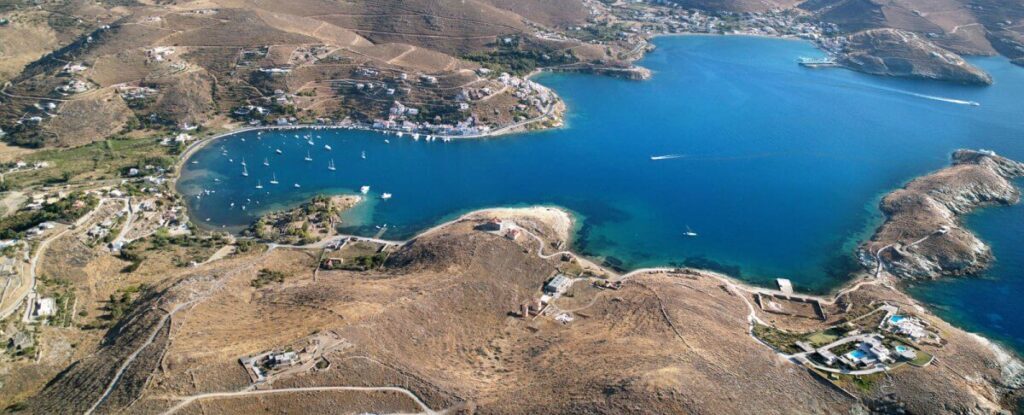
Fabulous holidays in Greece, the land of Apollo, mean a lot. The sea and sun constitute two basic ingredients, charter yachts the third. Greece, the land of the Sun and the Gods, offers you an endless variety of picturesque places from which to choose those that suit you best: The Ionian Sea (West Greece), the Cyclades (East Greece, Aegean Sea), the Sporades, the Dodecanese, the Sporades, the Northern Aegean, Crete island, all with remote or cosmopolitan islands, rocky or pine covered, reveal a kaleidoscopic variety for you to enjoy on your own floating villa. Greece is not just the country you know, but rather a series of Greece’s, each superimposed on the other like successive layers of soil recording the passage of time. Most of the temples and other archeological sites may be visited by yacht. A good 300 days a year the Greek Sun is at its best becoming ideal when on a yacht. Sail away from dusty and polluted cities to the clean air, blue sky and crystal-clear waters. A unique form of equilibrium between en man and his thought, manifested in temples and sculptures which have spanned the centuries, forever recalling us to order. A way of life also remains, which is another “call to order” because joy and contemplation – in order to be practical – require nothing else but a certain sky and a certain purity of heart. This is Greek’s another daily luxury! On a chartered yacht you can discover this world and mix with the local people, who are colorful and hospitable. You can go to places where only a private or charter yacht can go, to enjoy sipping wine at the seaside cafe, or eat feta and moussaka at the tavern with the bouzouki player whose musical strains will make men dance. You can go to places where peasant girls spin wool while guarding their flocks; where little donkeys carry the traveler up from the port of Santorini to the village; where automobiles and pollution will be unknown; (did you know that in Hydra cars are prohibited)? where the door of a house which opens to a stranger will set in motion sacred rites of hospitality. For the past as for the present, for all she offers, Greece remains a part of your reason for living. And your yacht will add extra value to this reason!
ITINERARIES
A wonder of a breathtaking landscapes, a nature beyond words to seek for your soul, blue waters in a palette of all blue colors, fabulous waters so safe for the kids and adults to swim, anywhere, since no dangerous species live in. Historical and ancient treasures in all islands and undersea create bonds with the past, strong alternations in landscapes beyond imagination, unforgettable moments you will experience. Infinite yachting areas with different color each! We present indicatively only the six of them, in separate charts each.
Athens – Poros – Dokos – Hydra – Spetses – Tolo – Nafplion – Monemvasia – Gerolimenas – Porto Heli – Ancient Epidavros – Aponisos – Moni Aegina – Aegina – Athens.
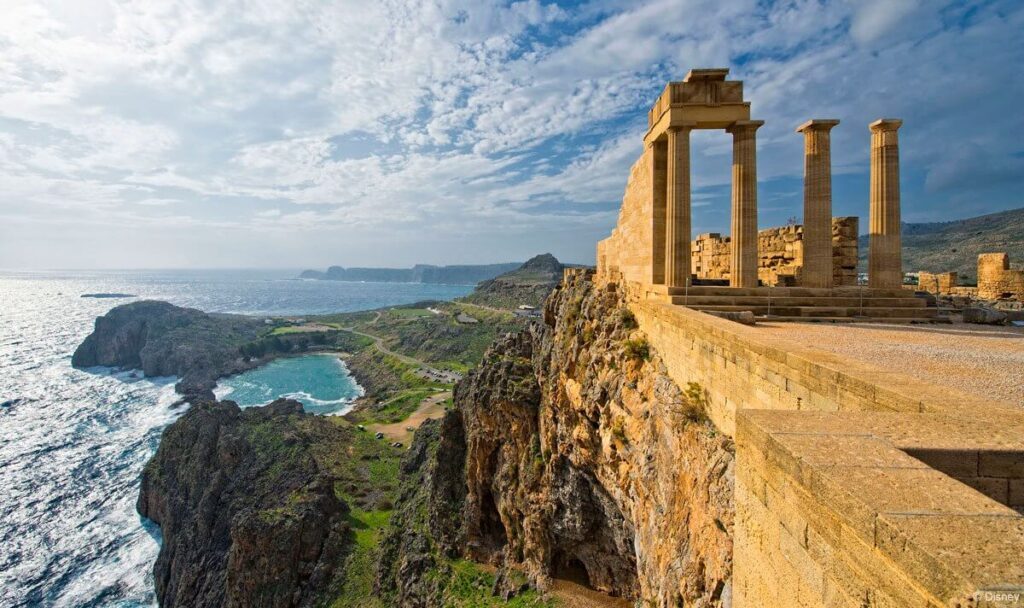
POROS: A volcanic island, formed through the union of two smaller islands, Kalavria and Sphaeria. Archaeology highlights: The scant remains of the Sanctuary of Poseidon, 5 km from the town of Poros on the road to the Monastery of Zoodochos Pigi. Swimmers will find charming little sandy bays along the way to Neorio, rimmed with pine trees down to the sea. Life on Poros is spent with dives in clear waters, visits in seaside resorts and night escapades in a wide variety of restaurants, bars, and lively discos.
HYDRA: Famous for maritime tradition, as is Spetses, favorite of celebrities. The Chora is picturesque and beautiful; with high and colorful sea captains mansions lining the waterfront while a stark grey hill rises in the background. Between the mansions are narrow streets with taverns and shops, where the foreigners gather after they reach the small port of this charming island. Hydra is also blessed by the absence of motorcars.
SPETSES: is furthest from Athens. Charming horse-drawn carriages are the form of travel in style, as cars are not allowed on the cobbled streets. Bougainvilleas overflow the white-washed garden walls that enclose the pebbled yards of the mansions. Antique cannons decoratively guard the scenic harbour, and the dozens of shops and cafes that line the shore. Sight worth seeing on Spetses is the house of Bouboulina, the Revolutionary heroine; the Mexis house, now a museum and the church of Agia Triada with its carved iconostasis. Among the most popular beaches on the island are Agii Anargyri and Agia Paraskevi.
TOLON was a small fishing village that has developed into a tourist resort on the strength of its sandy beach.
NAFPLION: The northeast Peloponnese welcomes us at Argos, the ancient strong point, today a point of departure for Nauplia – the first capital of free Greece – with the Bourtzi, an islet topped by a miniature fort, and the Palamidi rock. Sandy beaches, and local atmosphere complete the picture of Nafplion.
PORTO HELI: A popular tourist spot built in a natural harbor, safe from all kinds of weather. Hush vegetation and a modern town of 750 inhabitants with restaurants, bouzouki places, nearby sandy and secluded beaches – mainly open to yachtsmen – guarantee unique holiday moments.
MONEMVASIA: In Greek Monemvasia means one entrance. Medieval, Byzantine and Venetian town fortress grasping the high cliffs. She is joined with the Peloponnesian Coast opposite, with a thin stretch of land. Walking through town will definitely prove an experience. After crossing the bridge with the twelve arches, which joins the cliff with the land opposite, and the remains of the fortress walls you will reach the town were … time seems to have stopped: Mansions of strong Venetian influence, with more than 40 Byzantine Churches spread among them, numerous arches, and Coats of Arms. All these come into contrast with today’s lively atmosphere, which awaits your visit. It is a memorable place that for Greeks is a reminder and historical symbol of pride and resistance.
GEROLIMENAS: Arid, and dry complying totally with the natural characteristics of the nearby area of Mani. A small and quiet village built on the fringe of the sea, decorated by few olive trees and the remains of a Venetian Castle, the last stop of migrating quails. Walking through the wild nature and sailing along the steep and barren coastline will prove an overwhelming experience while tasting the local fresh fish is a must for all.
APONISOS: a small island close by Aegina with turquoise waters ideal for first swimming the day. Try ‘mezedes’, the greek home made appetizers at a small taverna.
MONI: is a small-uninhabited island that is partially wooded. It is a sanctuary for wild life and the sight of peacocks along the beach in the mornings is quite common.
AEGINA: Mythology relates that Aegina is named after the daughter of Asopos, who was abducted by Zeus. Aegina famous for its pottery is covered with pistachio trees. Pine forests surround its beautiful green villages. It is also the home to one of antiquity’s most famous temples, to Aphaia with 24 standing pillars. The capital of the island, Aegina, is particularly picturesque with colorful mansions, ever-busy streets, horse driven chariots, numerous shops selling pistachios and ceramics.
CYCLADES
Marina in Athens – Kea – Tinos – Myconos – Delos – Paros – Ios – Santorini – Sifnos – Serifos – Kithnos – Cape of Sounion – Athens A more extensive route would include as well islands of Andros, Syros, Koufonisia complex of islands, Amorgos, Sikinos, Folegandros, Milos, Kimolos.
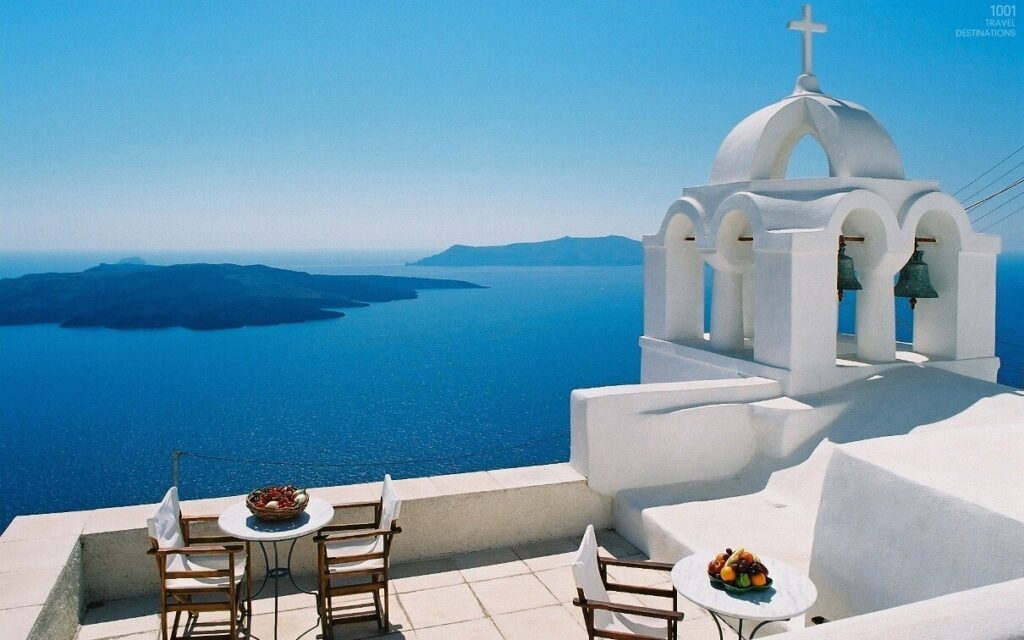
KEA: This exceptionally picturesque island is very close to Athens and offers relaxing vacations and pristine beaches at Pisses, Korissia, Koundouros, Otzia bay and Poles bay. Ioulis, the town, is built on the remains of the ancient town. The picture of the island that remains is of little valleys with vineyards and orchards between mountainous masses, leading to idyllic coves. One and two storey houses with tiled roofs, stone-paved alleyways, chapels, windmills, and monasteries, the most important of which is the Kastriani Monastery.
MYCONOS: World famous, is the cosmopolitan center of the Cyclades with over 700 churches according to the claims of the inhabitants. Low rocky hills slope down to enchanting golden beaches. Windmills overlook majestically the port at the town. A side of the town known as ‘Small Venice’ with numerous houses built on the fringe of the sea is one of the meeting points at night. White-washed cube-shaped houses are scattered about. In the narrow streets of the town chapels and picturesque taverns hide among folk art shops and stores selling jewellery and furs. Trends that will sweep the international scene are born in the intense nightlife of this modern resort.
DELOS: The sacred island of Delos was, in the myths, the birthplace of Apollo and Artemis. Today the island is uninhabited; it is a vast archaeological site whose superb monuments, remains of ancient temples, sanctuaries, the Market Place, the Theatre, the houses, the mosaics draw thousands of visitors in pilgrimage to what was, for a thousand years or so after the 9th century BC, the political and religious center of the Aegean.
IOS (or NIOS as the locals call it) is decorated with small scenic bays, countless chapels, vineyards, and olive trees, all set under the clear bright Cycladic sky. The sites of Ios include a Hellenistic tower of Plakotos and the remains of an ancient aqueduct at Agia Theodoti, traces of an ancient temple at Psathi and ruinous Venetian castle at the spot known as Paleokastro. Lovers of the sea will be enraptured by the superb beaches of Ios such as Milopotas, Agia Theodoti, Psathi, Kalamas, Plakes and Manganari.
SANTORINI:One of the best known of the Cyclades differs from the other islands in the group thanks to its geological morphology, the result of action by a volcano now dormant. Bright white domed houses clinging to the cliff sides of the caldera formed by the volcano’s explosion in 1500 B.C. have an incredible view of Kamenes (burnt ones) the coal colored islets in the middle. From the landing place, Skala, we can climb up to Fira, the capital, on foot or on donkey back. There is a funicular railway for those who whish to avoid the hundreds of steps. Some of the most spectacular beaches (Monolithos, Kokkini Paralia, Perissa) can be found on Santorini: some with dark pebbles and others with black sand. A whole civilization is coming to light at the archaeological sites at Akrotiri, the prehistoric city and Messa Vouno, where the ruins of Ancient Thira lie. The missing piece of Santorini once perfect circle is Thirassia, the wounded islet that closes the caldera, which is Thira in miniature.
SIFNOS: Grey trails line the rocks of Sifnos and white chapels lie between them. Here green alternates with dazzling white. Rare beauty, spellbinding views. Yards, alleyways, workshops – where the famous Sifnian pottery is made – 365 churches, chapels and important monasteries. The island was famous in ancient times for the wealth, which came from its gold and silver mines. The old capital of Kastro remains an example of medieval town planning. Vivid nightlife and numerous taverns serving local delicacies, among which “revithada: – roast chick peas – is the most characteristic, guarantee the best of memories.
KITHNOS: It was on the small island of Kithnos, famous in antiquity for the excellence of its administration (according to Aristotle in his “Constitution of Kithnos”) that recent archaeological finds have provided evidence of the earliest presence of man in the Cyclades. The shores are heavily indented and the island has radioactive thermal springs (Loutra) with great curative powers. The churches are beautiful and are graced with fine woodcarvings and with icons painted by the Cycladian painter (1700) Skordilis. The port of the island, Merihas, is on the western side of the island. Hora or Messaria, the island’s capital is 8 km from Merihas and stands on a hillside plateau. A little way to the south is the island’s former capital, which retains its ancient name of Driopida – a picturesque village, very typical of the islands. Some of the good beaches of the island for swimming can be found at Merihas, Episcope, Flambouria and Agios Stefanos.
IONIAN ISLANDS
Embarkation in Athens. Swimming in Aegina & overnight to Epidavros ancient city. Passage through unique Corinth Canal – Galaxidi beach – Zakynthos – Fiscardo in Kefalonia – Ithaki – Lefkada – Meganisi – Preveza –Antipaxoi – Paxoi – Corfu.
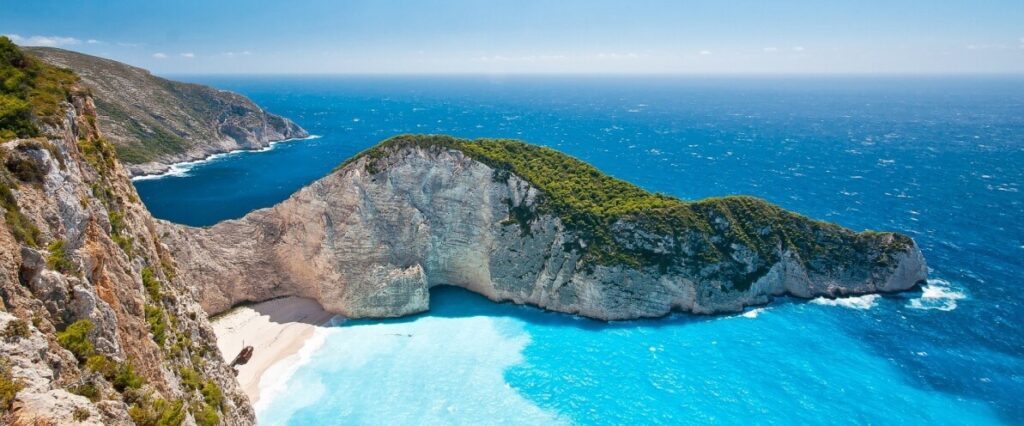
ZAKINTHOS: The southernmost island of the Ionian, almost triangular in shape, owes its name to the son of Dardanos, the King of Troy who according to myth built the first city there (Homer’s Iliad). The endangered sea turtle “Caretta – Caretta” has chosen the sandy beaches of Laganas, Vassilikos and Gerakas to lay her eggs there. It is not easy to forget the emerald sea, the pine covered hills, or the hospitable and openhearted inhabitants of Zante, as it is otherwise called. Churches are everywhere in the city of St. Dionysus, the island’s patron saint. Small coffee shops and picturesque villages are to be found among the olive and almond trees, in or around fields planted with vines and vegetables. Zakinthos has many fine sandy beaches with calm and clear waters but Laganas is the most famous. At night, there’s bound to be a “mandinades” session – folk songs with local accompanied by local music – underneath a typical balcony.
KEFALONIA: The largest of the Ionian Islands. Green rocks plunge suddenly into the deep blue waters. Kefalonia has been justly called the island of contrasts: Romans, Venetian and Byzantize ruins, side by side with famous beaches. The capital Argostoli is where the sea pours into spectacular swallow holes (Katavothres) and disappears endlessly into subterranean tunnels forming a rare geological phenomenon. The water reappears at Lake Melissani, an incredible semi-underground lake of clear turquoise and indigo water. Nearby is the Drogarati cave, a large stalagmitic cavern of rare beauty. To the north is located the small village of Fiskardo, and its pretty harbour, that has escaped the earthquakes and retains the old style buildings. On the east side of the island are Poros, Sami and Agia Efimia with its pebbled beach.
LEFKAS: The eastern side of the island has dense vegetation and smooth shores. On the west, the coast is steep though there are many long sandy beaches. But the sea everywhere is that deep blue. Lefkas is a distinguished island with its impressive Venetian Castle and the Monastery of Phaneromeni. The capital town is a picturesque and quiet place with its characteristic multi-coloured wooden houses. Villages built next to the sea. Excursions through the forests to the many sights, such as the ruins of the prehistoric city and the circular tombs. Scenic fishing villages on the western-pebbled shores lapped by the crystal clear sea.
PREVEZA: is a commercial port, which “guards” the entrance to the Amvrakic Gulf. This uniquely beautiful town is close to ancient Nikopolis (1st century B.C.) built by Octavian to commemorate his victory over Antony in the Battle of Actium. The ruins are well worth a visit: a large theatre, a villa and the city walls are well preserved and a small museum houses an interesting collection of artifacts.
MEGANISSI: It is 12 nautical miles southeast of Lefkas. According to historians, Meganissi has been settled since Homer’s time. It has three villages, sea caves, wonderful sandy beaches and clean waters.
ITHACA: is known to the world as being Odysseys’ homeland. Its enchanting coves turn it into paradise on earth despite its small size and mountainous nature. The west side of the island is steep and bare in contrast with the east, which is verdant and slopes gently down to the sea. The island is open to strolls and explorations: remains of the Venetian prisons, right at the entrance of the harbor and historical monuments, which survived the earthquake of 1953. The visitor can visit the medieval Monastery of the Archangels (Taxiarhon) and the wonderful caves (the cave of the Nymphs) of the island that are just begging to be explored. Green Ithaca is a much-loved place, with scenic beaches, sleepy little villages, and an ideal spot for an unforgettable vacation.
DODECANESE Islands
Rhodes-Symi-Nissiros-Cos-Kalymnos-Leros-Lipsi-Patmos-Fournoi-Samos. Cruising to North Aegean Islands, beautiful Chios & Lesvos, or return to Athens after visiting Andros island and South Evia island.
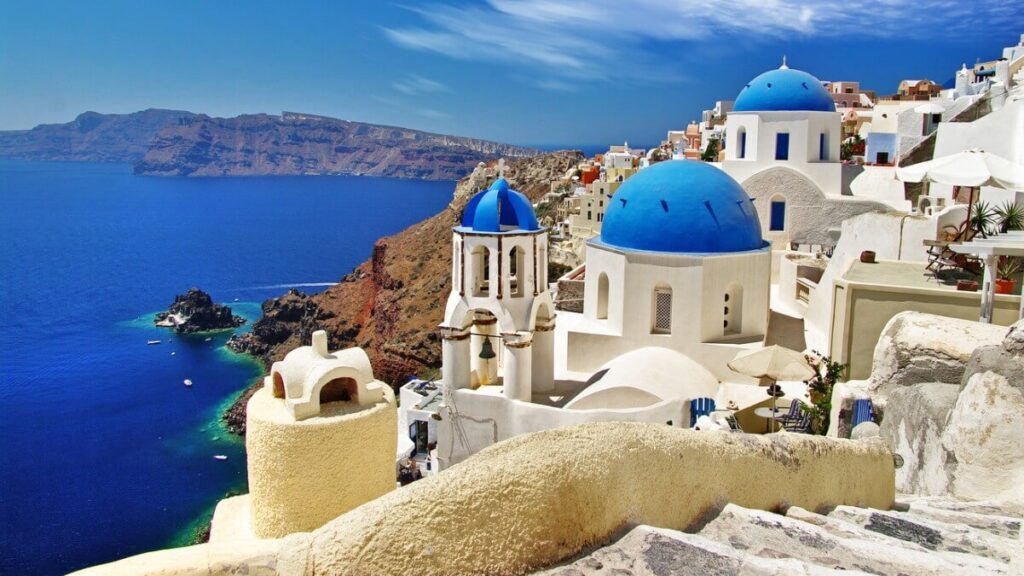
RHODES: The largest island in the group of “Dodecanese”, also known as the island of the Sun. The capital, City of Rhodes, is like a valuable coin with two faces. One face, “heads”, is the old town, a fairy-tale place surrounded by medieval wall and traversed by the Street of the Knights of St. John. On either side of the road is the old town with the “Inns”, the Hospital of the Knights and the palace of the Grand Master. The other face “tails”, is the modern city with an intense nightlife, broad streets, beautiful buildings, large hotels and hundreds of shops where anything can be found. The entire island is crammed with sights worth seeing, from the archaeological sites to the fabulous beaches, from the valley with the butterflies to the ruins of ancient Rhodes, from the Acropolis of Lindos to the archaeological sites at Kameiros and Ialyssos.
SYMI: A small mountainous island renowned for its sponge divers and also for its shipbuilders was reputed to be the birthplace of the Three Graces. While its interior is punctuated with small valleys, its coastline alternates between being steep and rocky or sandy and indented with little coves. In antiquity it bore the names “Aigli” and “Metapontis” It took its present name from the nymph “Syme” who was Poseidon’s wife. After its conquest by the Knights of St. John in 1373, commerce and shipping flourished until steam replaced sail. The stately mansions in the main town date from this period, which reached its peak in the 19th century.
NISSIROS: The volcano, dormant since 1888. The white crater with the streams of evading sulfur, the spas, colors ranging from yellow and mauve to dark red and black, olive trees, almond trees, vineyards and oaks. Elements, which will help you, feel rather … helpless under nature’s evident superiority. The inhabitants though seem to have got used to the idea: they are famous throughout the area for their lively feasts, which in most cases last for a few days! After a dive in the water – watch out for the strong currents – nibble on the local moussaka.
FOURNI: At the top of the “triangle” formed by the islands of Samos, Ikaria and Patmos, these tiny islands – with merely total 1.400 inhabitants most of whom preoccupy themselves with fishing – are the next stop of our cruise. Everything is within walking proximity: the secluded beaches, the new as well as the restored houses all with plenty of flowers, the two windmills on top of the hills, the spacious square under the shadow of plane trees…
KOS: Once in the picturesque, well-sheltered harbor of Kos, the charms of the island become immediately evident. Palm-lined streets lead to many Classical and Hellenistic sites (early Christian Churches with their noteworthy frescoes), graceful minarets mingle with roman remains, and the great medieval castle, which was defended by the Knights of St. John flanks the harbor. Hippocrates, the father of ancient medicine, by tradition taught under a colossal plane tree nearby. About 4 km out of town is the great Doric Temple of Asklepios and the Asklepeion (Medicine School) 400 BC, a major center of healing in ancient times. The busy waterfront is lined with cafes and taverns, many hotel are on further beaches. Not surprisingly, thousands visit Kos, every season.
KALYMNOS: Closely related to sponge fishermen, legend, harsh mountainous regions, austere rock formations, caves. Traces of her history are visible on each and every step: castles, monasteries, remains or sanctuaries, caves with prehistoric findings, geological changes. The town with impressive monuments and buildings e.g. the Municipality and the Library, seems like a painting, which ever changing colors and scenery clinging on the surrounding hard slopes. Coves and bays are available for exploration, by the most adventurous. The local shops offer a wide variety of excellent quality sponges while the stuffed lamb – a local delicacy – awaits the most daring.
LEROS: Platanos, Agia Marina and Pandeli are the names of the three separate areas, which uniformly compose the main town of the island that has nothing to envy from all previous ports of call in terms of history, natural surroundings, overwhelming views, evergreen slopes and contrasts. Fragments of the Roman Castle – “Braze” – will welcome you in port on arrival. The town itself with large winding streets, alleys with eucalyptus trees on their sides, the parks, the mansions, as well as the Castle overlooking the town, are only examples of what will surprise you, the first time visitor. Fish marinated in rosemary, roast octopus, and “gavathes” – tropical fruit available only in Leros – are more examples of what will astound you!
LIPSI: Gentle, low hills covered wholly covered with bushes, slopes ending in lace like beaches, small valleys with olive groves, fields and vineyards which form sandy or pebbled beaches are all “trademarks” of the island. She seems to have been designed by nature in order to provide tranquillity and holiday relaxation amidst kind and openhearted inhabitants who keep tradition alive. Small distances, ideal for walks through nature, paths and shortcuts all lead to the nearby castle, the chapels, the ever-clean beaches.
PATMOS: Rising sharply from the sea, Patmos is composed of three masses of volcanic rock connected by narrow strips of land. The approach to the harbour and village of Skala is up a long, narrow inlet watched over by the great medieval monastery of St. John the Divine, visible from all points at sea, and which draws thousands to Patmos every year. The monastery houses the body and shrine of the founder, the XI Century Saint Christodoulos and a magnificent library of ancient manuscripts. Below, on the hillside, and marking the site where by tradition St. John received the word of God, is the Church of the Apocalypse (Revelation). From the monastery roof, dramatic views range far into the Aegean and over Asia Minor. Patmos is one of the most remarkable medieval sites in all Greece and not to be missed by the traveller in the Dodecanese.
SAMOS: The easternmost island of the Aegean is within swimming distance of Asia Minor. Images of the island are framed by bunches of Samian grapes, vine leaves and vineyards. The capital, Samos, is built like an amphitheater at the end of a deep bay, next to the harbor of Vathi. Plane trees, springs, and neoclassical buildings coexist harmoniously with modern elements at Karlovassi. Gorgeous beaches at Kokari, pebbled ones at Potami, busy ones at Tsamadou and the best one on the island at Chrissi. There are many monasteries on the Samos, such as Megali Panagia, Agia Zoni, Vronta, Panagia Spiliani, Zoodohos Pigi. Finally, to the south is the Pithagorio or Tigani with the ruins of the ancient acropolis and Evpalineio aqueduct, and further south still is the Heraio, dedicated to the worship of Hera.
SPORADES islands
Skiathos – Alonissos – Peristera – Kyra Panagia – Skyros – Skatzoura – Skopelos – Skiathos

SKIATHOS: is a verdant idyllic paradise with more than 70 bays and coves and three harbors. Nine small islands orbit Skiathos as if mesmerized by the island’s beauty. The principal town, also called Skiathos, was built in 1830 on two low hills. History has left impressive landmarks on the island, be it the Castle remains, on the top of the modern town, Monasteries dating back to the 17th century, local museums with post Byzantine Icons, guns, precious glass and porcelain objects. The island is richly endowed by nature with numerous, seemingly endless sand beaches and conifers reaching the fringe of the sea. The nights in Skiathos are especially lively.
PERISTERA: is the island lying roughly parallel to and just to the east of Alonissos whereas further north is the island of Pelagos with the bay of KYRA PANAGIA. All these spots offer unrivalled beauty with crystal clear water.
ALONISSOS: is long and thin and surrounded by scattered islets. These islets and the area around them are the Marine Park which is the last refuge of the Mediterranean seal “Monachus-Monachus”. The ruins of an ancient city can be found on Psathoura and a cave decorated with multi-hued stalactites and stalagmites is the famous cave of Cyclops. Rich vegetation covers the island, and in some cases, the pines actually touch the deserted beaches while fresh lobster, and local cheese pies are there for you to taste.
SKYROS: is low hills, good underwater fishing and diving, crystal clear water, sandy beaches, little seaside taverns, sea caves, and the unique Skyrian ponies. From the castle above the Hora, which combines Byzantine and Venetian ruins with older fortifications, the town spreads out below you in a cubists dream. Each of the houses has an interior that reminds one of a folk art museum, and much of the handmade folk art is sold in little shops.
SKOPELOS: is exceptionally beautiful with scenic coves, bright white churches and monasteries among picturesque farm-house glimpsed through the gold-green of the olive groves on even slopes, under the brilliant light of the sun. Moreover, the Venetian Castle and the 123 chapels – most of which act as bulwarks for Orthodoxy – present throughout the island are sure to produce a profound effect on the beholder. In the few scattered villages and the picturesque sites we are sure that you will re-discover peace and tranquillity.
